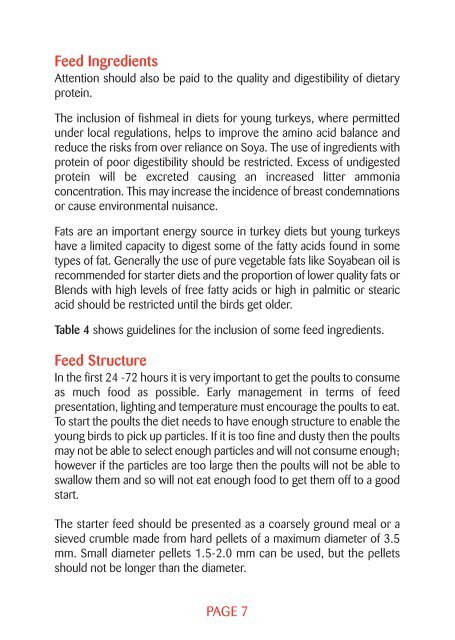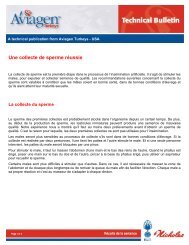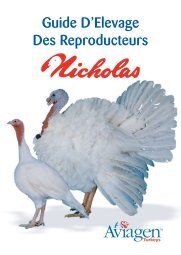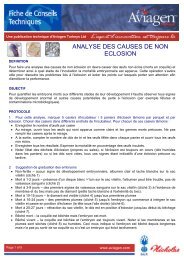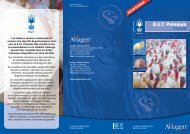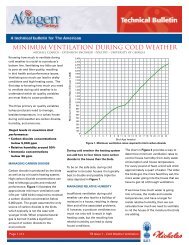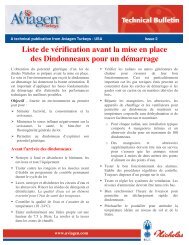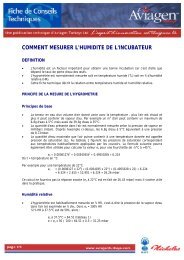Feeding Guidelines for Nicholas and B.U.T. ... - Aviagen Turkeys
Feeding Guidelines for Nicholas and B.U.T. ... - Aviagen Turkeys
Feeding Guidelines for Nicholas and B.U.T. ... - Aviagen Turkeys
Create successful ePaper yourself
Turn your PDF publications into a flip-book with our unique Google optimized e-Paper software.
Feed Ingredients<br />
Attention should also be paid to the quality <strong>and</strong> digestibility of dietary<br />
protein.<br />
The inclusion of fishmeal in diets <strong>for</strong> young turkeys, where permitted<br />
under local regulations, helps to improve the amino acid balance <strong>and</strong><br />
reduce the risks from over reliance on Soya. The use of ingredients with<br />
protein of poor digestibility should be restricted. Excess of undigested<br />
protein will be excreted causing an increased litter ammonia<br />
concentration. This may increase the incidence of breast condemnations<br />
or cause environmental nuisance.<br />
Fats are an important energy source in turkey diets but young turkeys<br />
have a limited capacity to digest some of the fatty acids found in some<br />
types of fat. Generally the use of pure vegetable fats like Soyabean oil is<br />
recommended <strong>for</strong> starter diets <strong>and</strong> the proportion of lower quality fats or<br />
Blends with high levels of free fatty acids or high in palmitic or stearic<br />
acid should be restricted until the birds get older.<br />
Table 4 shows guidelines <strong>for</strong> the inclusion of some feed ingredients.<br />
Feed Structure<br />
In the first 24 -72 hours it is very important to get the poults to consume<br />
as much food as possible. Early management in terms of feed<br />
presentation, lighting <strong>and</strong> temperature must encourage the poults to eat.<br />
To start the poults the diet needs to have enough structure to enable the<br />
young birds to pick up particles. If it is too fine <strong>and</strong> dusty then the poults<br />
may not be able to select enough particles <strong>and</strong> will not consume enough;<br />
however if the particles are too large then the poults will not be able to<br />
swallow them <strong>and</strong> so will not eat enough food to get them off to a good<br />
start.<br />
The starter feed should be presented as a coarsely ground meal or a<br />
sieved crumble made from hard pellets of a maximum diameter of 3.5<br />
mm. Small diameter pellets 1.5-2.0 mm can be used, but the pellets<br />
should not be longer than the diameter.<br />
PAGE 7


